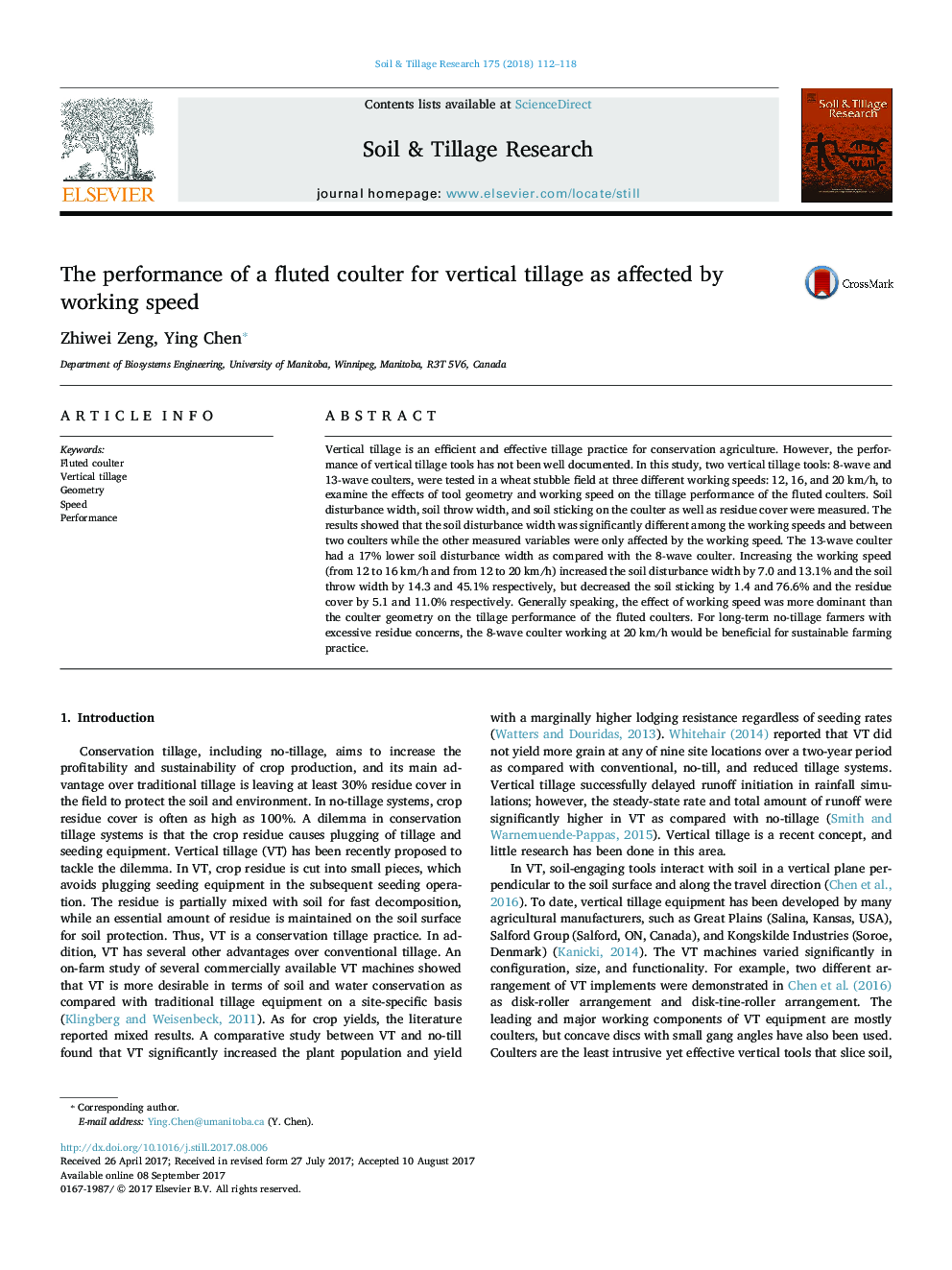| Article ID | Journal | Published Year | Pages | File Type |
|---|---|---|---|---|
| 4927425 | Soil and Tillage Research | 2018 | 7 Pages |
â¢Two different fluted coulters for vertical tillage were tested in a field at three different working speeds.â¢Soil disturbance width was significantly different between the two coulters and three working speeds.â¢Soil throw width, soil sticking, and residue cover were affected only by the working speed.
Vertical tillage is an efficient and effective tillage practice for conservation agriculture. However, the performance of vertical tillage tools has not been well documented. In this study, two vertical tillage tools: 8-wave and 13-wave coulters, were tested in a wheat stubble field at three different working speeds: 12, 16, and 20Â km/h, to examine the effects of tool geometry and working speed on the tillage performance of the fluted coulters. Soil disturbance width, soil throw width, and soil sticking on the coulter as well as residue cover were measured. The results showed that the soil disturbance width was significantly different among the working speeds and between two coulters while the other measured variables were only affected by the working speed. The 13-wave coulter had a 17% lower soil disturbance width as compared with the 8-wave coulter. Increasing the working speed (from 12 to 16Â km/h and from 12 to 20Â km/h) increased the soil disturbance width by 7.0 and 13.1% and the soil throw width by 14.3 and 45.1% respectively, but decreased the soil sticking by 1.4 and 76.6% and the residue cover by 5.1 and 11.0% respectively. Generally speaking, the effect of working speed was more dominant than the coulter geometry on the tillage performance of the fluted coulters. For long-term no-tillage farmers with excessive residue concerns, the 8-wave coulter working at 20Â km/h would be beneficial for sustainable farming practice.
